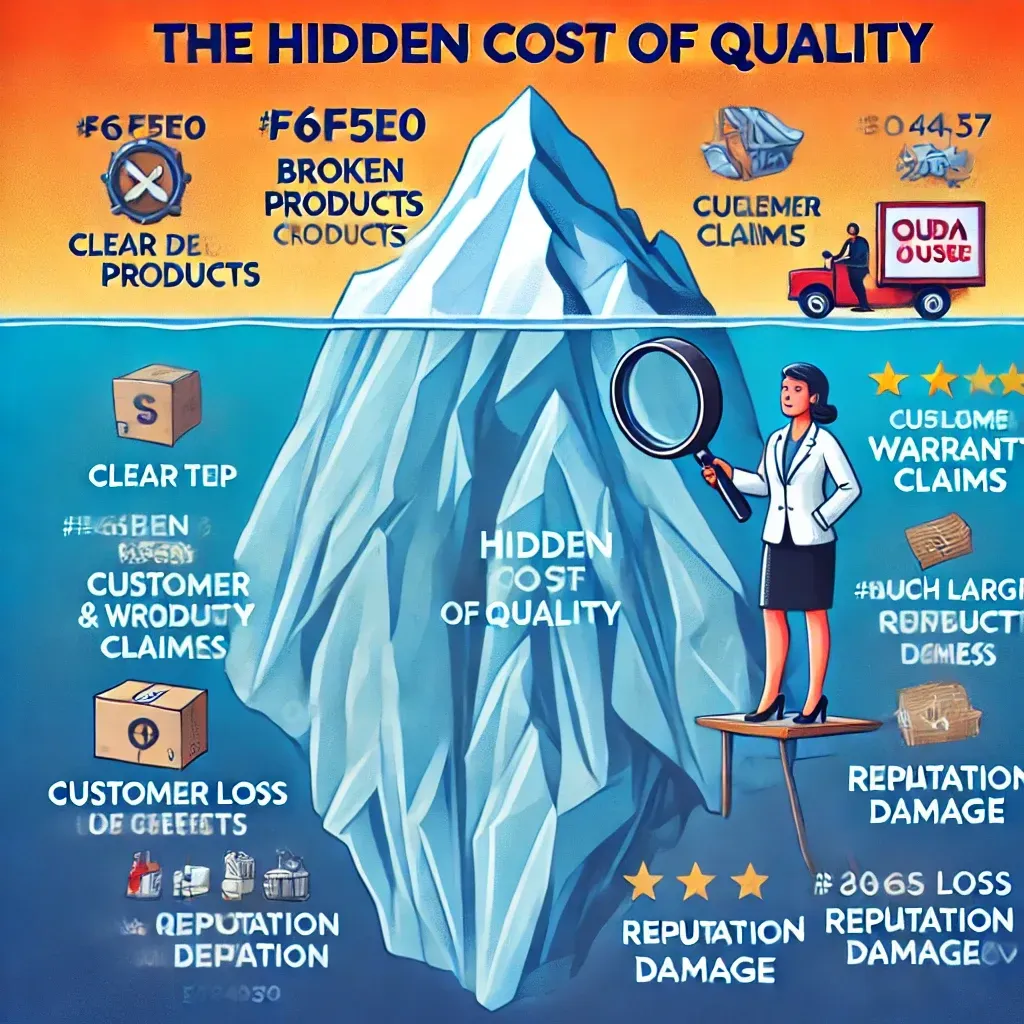The Ultimate Guide to Residual Risk
Inherent risk in medical devices refers to the level of risk associated with the device before any controls or mitigation strategies are implemented. For example, a medical device that is implanted in the body carries inherent risks such as infection, rejection, or other adverse events.
Residual risk, in the context of medical devices, refers to the level of risk that remains after controls or mitigation strategies have been implemented to reduce the inherent risk. For example, a manufacturer may conduct clinical trials to demonstrate the safety and efficacy of a medical device before it is marketed. They may also implement design controls, quality controls, and post-market surveillance to further reduce the risk of adverse events.
Inherent risk in medical devices can also vary based on the classification of the device. For example, a Class III device such as a pacemaker carries a higher inherent risk than a Class I device such as a tongue depressor.
Residual risk can also vary based on the intended use of the device and the patient population. For example, a medical device intended for use in pediatric patients may carry a higher residual risk due to the unique physiological characteristics and developmental stages of children.
In the context of medical device regulation, inherent risk and residual risk are important concepts that are considered during the regulatory process. The level of risk associated with a medical device is assessed during pre-market review, and appropriate controls and mitigation strategies are required to reduce the residual risk to an acceptable level before the device is approved for marketing. Post-market surveillance and adverse event reporting are also important tools used to monitor and manage residual risk over the life cycle of the device.
Risk tolerance is the degree of risk that an individual, organization, or entity is willing and able to accept in pursuit of their goals and objectives. It is an important concept in risk management as it helps to determine the level of risk that is acceptable and the extent to which mitigation strategies should be implemented. Risk tolerance is influenced by a variety of factors such as financial resources, regulatory requirements, market conditions, and the nature of the activity or process being undertaken. For example, an investor with a high risk tolerance may be willing to invest in a high-risk asset such as a startup company, whereas an investor with a low risk tolerance may prefer to invest in a more stable asset such as bonds. Risk tolerance can also change over time as circumstances and priorities change. Understanding risk tolerance is essential in developing an effective risk management plan that balances risk and reward while aligning with an individual's or organization's goals and objectives.
Risk mitigation is the process of reducing the likelihood or impact of a potential risk. There are four common risk mitigation strategies that organizations can use to manage risks:
1. Risk Avoidance: This strategy involves avoiding the activity or process that presents the risk. For example, if a company operates in a high-risk area, it may choose to avoid the area altogether.
2. Risk Reduction: This strategy involves taking measures to reduce the likelihood or impact of the risk. For example, a company may implement security controls such as firewalls, antivirus software, and intrusion detection systems to reduce the risk of a cyber attack.
3. Risk Transfer: This strategy involves transferring the risk to another party. For example, a company may purchase insurance to transfer the risk of a potential loss to an insurance company.
4. Risk Acceptance: This strategy involves accepting the risk and its potential impact. This strategy may be appropriate when the cost of mitigating the risk is greater than the potential impact. For example, a company may accept the risk of a minor equipment failure rather than investing in expensive preventive maintenance.
The selection of a risk mitigation strategy depends on the nature of the risk, the potential impact of the risk, and the resources available to manage the risk. A comprehensive risk management plan may use a combination of these strategies to effectively manage risks and ensure business continuity.
Risk acceptance is a form of risk limitation. Risk limitation strategies aim to reduce the impact of a risk, rather than prevent or avoid it altogether. Risk acceptance involves accepting the risk and its potential impact, rather than implementing controls or mitigation strategies to reduce or transfer the risk.
The "Big Three" of residual risk are:
1. Likelihood: This refers to the probability that a risk event will occur despite the implementation of mitigation strategies. A risk with a higher likelihood of occurring will have a higher residual risk.
2. Impact: This refers to the magnitude of the consequences that will result from a risk event, despite the implementation of mitigation strategies. A risk with a higher impact will have a higher residual risk.
3. Detectability: This refers to the ability of an organization to detect and respond to a risk event, despite the implementation of mitigation strategies. A risk with a lower detectability will have a higher residual risk.
At many organizations, residual risk can be found in various areas of the business. Three areas that commonly harbor residual risk are recovery strategies, recovery exercises, and basic infrastructure. Recovery strategies refer to the plans and procedures in place to recover from a disaster or disruption to business operations. The failure to have a comprehensive recovery strategy can result in a high residual risk, which can leave the organization vulnerable to extended downtime and financial losses. Recovery exercises refer to the regular testing of recovery strategies to ensure they are effective and can be executed efficiently. If recovery exercises are not conducted frequently or are not realistic, residual risk may remain. Basic infrastructure includes the hardware, software, and network infrastructure that support the organization's IT systems. If basic infrastructure is outdated, poorly maintained, or not properly secured, residual risk can be high. By identifying these areas and addressing any residual risk through appropriate mitigation strategies, organizations can better ensure the continued success of their operations.
Managing residual risk is an important part of any risk management program. Here are some steps that can help to manage residual risk effectively:
1. Identify residual risks: Conduct a risk assessment to identify residual risks and determine the likelihood and potential impact of these risks. This will help to prioritize the risks and determine appropriate mitigation strategies.
2. Evaluate risk tolerance: Determine the level of risk tolerance for the organization and ensure that residual risks fall within acceptable limits. This will help to ensure that the residual risks are aligned with the organization's goals and objectives.
3. Mitigate residual risks: Implement mitigation strategies to reduce the likelihood or impact of residual risks. This can include activities such as security testing, regular monitoring, and contingency planning.
4. Monitor residual risks: Regularly monitor the residual risks to ensure that the mitigation strategies are effective and that residual risks are within acceptable limits. This will help to identify any changes or new risks that may require additional mitigation strategies.
5. Review and update risk management plan: Review and update the risk management plan on a regular basis to ensure that it remains relevant and effective. This will help to ensure that the organization's risk management program is up-to-date and that residual risks are effectively managed.
By following these steps, organizations can effectively manage residual risk and ensure the continued success of their operations. It is important to note that residual risk cannot be completely eliminated, but it can be managed to an acceptable level through the implementation of appropriate mitigation strategies.
Calculating residual risk is an important step in determining the level of risk that remains after controls or mitigation strategies have been implemented. The residual risk is the level of risk that remains after the implementation of controls, which includes the likelihood and potential impact of the risk event.
To calculate residual risk, organizations typically use a risk matrix or risk heat map, which assigns a numerical value to the likelihood and impact of a risk event. The numerical values can be ranked on a scale of low, medium, or high. The likelihood and impact scores are multiplied to generate a risk score or a risk rating for each identified risk. The risk rating can be used to determine the level of residual risk associated with the identified risk.
For example, if a risk has a high likelihood and high impact, it may have a risk rating of 9 (3 x 3 = 9). This indicates a high level of residual risk associated with the identified risk. The risk matrix or risk heat map can then be used to determine the appropriate mitigation strategies for the identified risk, such as risk avoidance, risk reduction, risk transfer, or risk acceptance.
Calculating residual risk is an ongoing process, as the risk landscape can change over time. Organizations should regularly review and update their risk management plans to ensure that residual risks are managed effectively and that mitigation strategies remain relevant and effective. Regular risk assessments and risk monitoring can help to identify changes in the level of residual risk and the effectiveness of mitigation strategies. By effectively managing residual risk, organizations can minimize the potential impact of risk events and ensure the continued success of their operations.







Contact Us
תודה רבה, הטופס נשלח בהצלחה
אירעה שגיאה בהזנת הפרטים, אנא נסו שנית
פרטי התקשרות
רחוב - הכלנית 26, כפר סבא
טלפון - 054-2277887
פקס - 09-7770139
מייל - ronit@ronitsadeh.com

האתר נבנה ועוצב ע"י חברת קודנט בניית אתרים לעסקים | קידום אורגני



